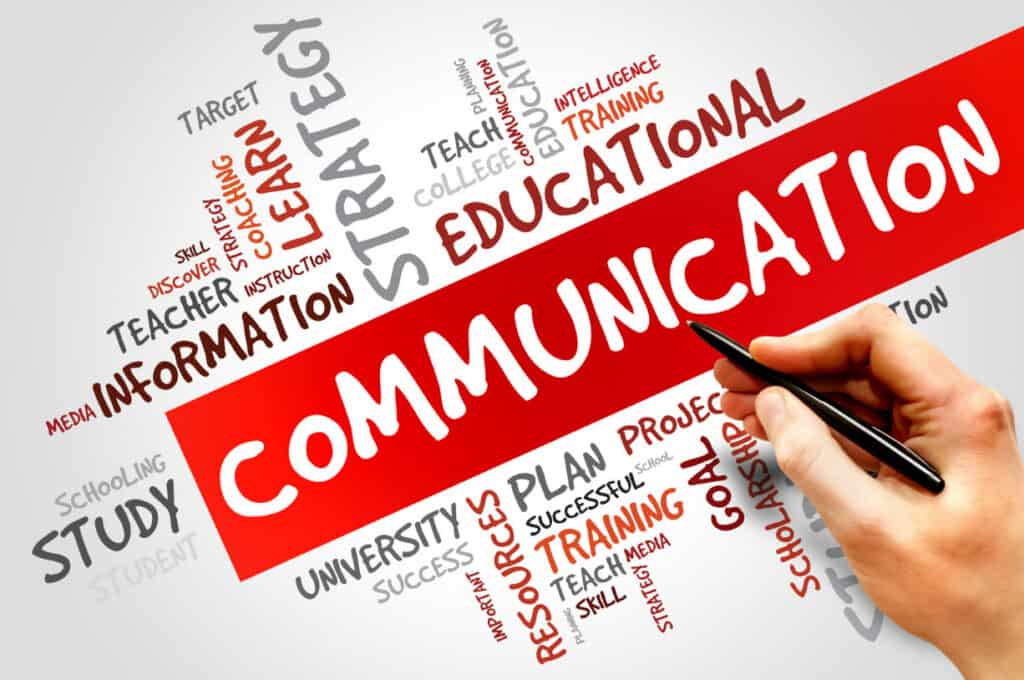Communication is critical in nearly all aspects of life, especially for children. Schools need more than how information is transmitted from one department or area to another. It fills the gap between parents, students, teachers, and the rest of the staff. This ensures everyone is at their best peace of mind and confidence.
Table of Contents
Check out these amazing best practices for school communication to help you take connection to the next level.

Best Practices for School Communication:
Invest in Signage for Schools
Signage, as the term suggests, is a board designed to send a particular message or warning to someone. This would be an excellent step in aiding communication in learning institutions because staff may not always be available to give instructions.
The good thing about these designs is that they are ideal for nearly all ages and grades, and the message is easy to understand. Some standard details in signage include COVID safety, crosswalk, fire exit, fire safety, parking, prohibition, menu, warning, or upcoming events.
Signage doesn’t have to be stickers. It can also be wallpaper, plaques, graphics, monoliths, fascias, posts, and panels. You can also use digital signage for schools to create electronic displays.

Make Use of Technology
Communication and technology always go hand in hand. You can achieve so much by having the right technology when setting up communication channels in a school. For more effective results, you must embrace modern techniques such as social media platforms, blogs, emails, phones, livestreams, or texts.
Gone are the days of exchanging letters between parents and teachers. Employing communication technology in schools improves everyone’s experience, saves time, and enhances digitization.
Train the Staff
Good communication habits start from within before spreading to the rest of the institution. You should train your staff on the core details to create a solid school foundation. Training enables teachers and the rest of the administration to connect well with students and parents.
That way, there will be no miscommunication and related mistakes. The key areas to educate yourself on include feedback, conflict resolution, non-verbal communication, empathy, and active listening.
Engage in a Professional Manner
It is better to keep everything professional to avoid misinterpretation of information and other mistakes related to communication in schools. Professional communication involves being empathetic, actively listening, intentional, and offering immediate feedback.
You should also be clear and concise in your writing to avoid misunderstandings. Use grammar and punctuation carefully and maintain politeness and respect at all times.
Additionally, it’s essential to learn about your audience and determine what medium of communication suits them the best and will not feel out of place.
Provide Timely and Regular Updates
Updates are a significant part of communication, especially in learning institutions where parents place a great deal of hope. School administration must invest in periodic updates to maintain healthy bonds and experiences.
Regular updates can be achieved through weekly or monthly emails, progress reports, or newsletters. This goes hand in hand with advance notices, meaning critical details should be announced ahead rather than immediately. It’s important to emphasize the deadline and any shifts in pre-announced dates.
Conduct Physical Meetings Occasionally
Communication should be significant in both online updates and physical meetings. Physical meetings add a personal touch to the relationship while leaving nothing untouched. They are ideal for more complex or sensitive subjects that are effective on digital platforms.
Additionally, it facilitates communication within the institution, complementing the other channels. This form emphasizes body language, tone, immediate responses, empathy, full attention, and emotions.
Address Concerns as Soon as They Occur
Like any other institution, parents, teachers, students, or anyone else always have concerns. These can ruin relationships, reputations, and public image if left unresolved.
Sometimes, they do not have to be actual concerns; they are merely rumours and misconceptions surrounding the facility. Addressing biases also promotes equity and fairness while fostering a positive environment. The school will likely flourish when the air is clear of potential disagreements and restlessness.
Develop an Emergency Communication Plan
Emergencies will happen. Therefore, staying prepared for anything is best, especially in a learning environment. The communication department should design a reliable plan for passing information in an emergency.
This involves identifying each audience’s critical representatives and various potential emergencies. Secondly, communication channels should be well-defined with pre-developed templates.
The contact list should be updated to enhance emergency management speed and accuracy. Good communication is a crucial requirement of a rewarding learning environment.
By following these ideas, schools can create more than just a community but a place of hope, positivity, and success for many. Partnering with a reliable software manager assures you of the best results, saves time and money, and makes work easier.
Open Communication Between Parents and Teachers
It’s important to have clear ways for parents to contact teachers about their child’s progress, concerns, or questions. This builds trust and teamwork.
Schools can use online portals to keep in touch with students and parent-teacher meetings. This keeps parents updated on their child’s academic and social growth, helping them provide better support at school and home.
Teachers sharing updates about class activities, homework, or future events helps keep parents informed. Engaged and informed parents are likelier to participate actively in their child’s education.

Student Feedback
Schools can set up suggestion boxes, student councils, or online surveys to gather what students think about different parts of their education. This includes classroom activities after school.
Also, promoting open chats among students improves their social skills and emotional maturity. When students feel listened to and appreciated, they are more involved and motivated to do better at school. This two-way talk between students and teachers helps schools spot and fix issues early.
Parent-Teacher Associations (PTAs)
Parent-teacher associations (PTAs) connect school staff, teachers, and parents. They help build teamwork and encourage community involvement. Schools should encourage active participation in PTAs to create a space where parents and educators can discuss school programs, student needs, and future events.
PTAs also organize school-wide activities, fundraisers, and volunteer programs that enrich students’ experiences. Parents and teachers can agree on common goals so that students get the support they need at school and home. A solid PTA builds community spirit, trust, and cooperation, which benefits the whole school environment.



